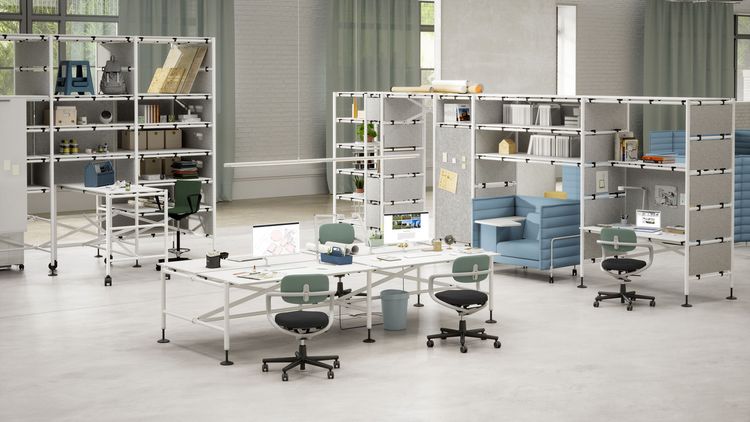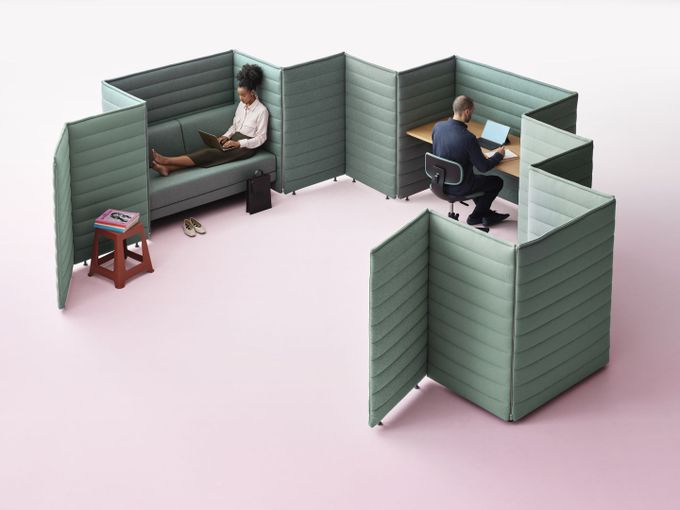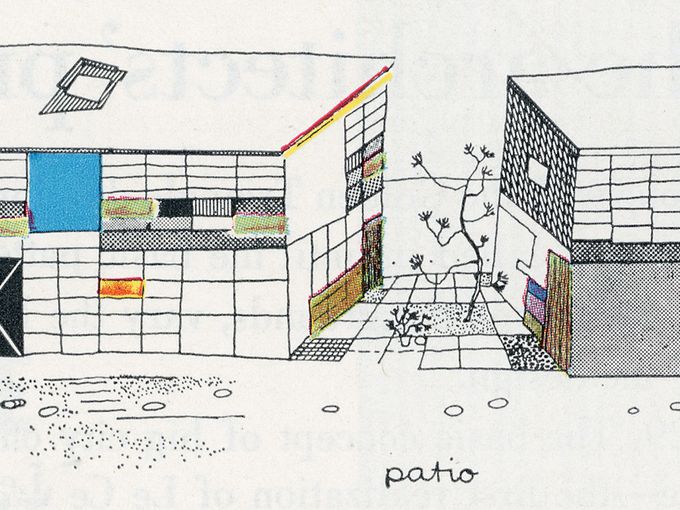ProductsChairsLounge chairsSofasOffice chairsChaises longuesStools & benchesSculpturesConference chairsAirport seatingStorage spaceMicro architectureDining tablesCafé tablesCoffee & side tablesDesksOffice furniture systemsConference systemsLightingClocksDecorative objectsCoat racks & wall shelvesTrays & vesselsNewBestsellerQuickshipColour & materialAlexander Girard Antonio CitterioBarber OsgerbyCharles & Ray Eames George NelsonHella JongeriusIsamu NoguchiLounge chair finderOffice chair finderGift finderCare & repairSpare partsCare productsManufacturer warrantyVitra Circle StoresMynt: sit differentlyAntony Limited Edition 2025InspirationsLiving roomDining roomHome OfficeChildren's roomOutdoorHome StoriesAugmented RealityColours & materialsHome SelectionWorkspaceFocusMeetingWorkshopClub OfficeCitizen OfficeStudio OfficeDynamic SpacesHospitalityAirportsEducationCo-WorkingHealthcareOur ClientsDestination WorkplaceA case for classicsOffice chairsDancing OfficeHome StoriesThe Home Selection fabrics from Kvadrat and DedarAugmented Reality - bring Vitra products into your homeSchool of Design: Showcase work and knowledgeA case for classicsColour & materialAn open house An office landscape - without walls or partitionsHigh comfort of low energyA leading space for a leading art collegeServicesCare & repairCare productsManufacturer warrantyFAQ and contactInstructionsConsulting & Planning StudioVitra Circle StoresConsulting & planning in the VitraHausInstructionsOutdoor care instructionsRepair, maintenance, overhaul at the Vitra Circle Store Campus ProfessionalsCAD dataProduct factsheetsCertificatesSustainability reportInstructionsEcology informationpConPlanning examplesColour & Material LibraryCertificates and standardsHome SelectionTo the dealer loginOur ClientsMyntDestination Workplace: Visit our clients and partnersAnagram SofaMikadoTyde 2 on castorsACXDancing OfficeOffice chairsMagazineStoriesConversationsExhibitionsDesignerProject VitraA Capsule in TimeSeeing the forest for the treesRefining a classicMynt is a lifetime achievement to meA desk like a typefaceV-FoamSculptural IconsGames bring people together – just like good officesLet there be light!Social SeatingJust Do It!EVER GREENWhy the Eames La Fonda Chair was designedWhen a Sofa is more than just a Sofa: Anagram100% virgin wool – 100% recyclableAn archive is like a time capsuleVitraHaus Loft - A conversation with Sabine MarcelisA 1000 m2 piece of furnitureFrom a toy to an objectThe Eames Collection at the Vitra Design MuseumAbout the partnership between Eames and VitraVitra CampusExhibitionsGuided tours & workshopsFood and drinkShoppingActivities for familiesArchitectureYour eventConsulting & planning in the VitraHausPlan your visitVitra Campus appCampus EventsNewsVitraHausVitra Design MuseumVitra SchaudepotVitra Circle Store CampusOudolf GartenAbout VitraSustainabilityJobs & CareersDesign processThe Original is by VitraHistory - Project Vitra
Comma – much more than an office system
Interview with Christian Grosen, Chief Design Officer, Vitra

An office system that is more than just furniture, but can define the entire space? And can adapt from day to day? Christian Grosen, Chief Design Officer at Vitra, talks in an interview about changes in contemporary office life and the design process behind the new Comma office system.
The pandemic has had a major impact on our daily work routines. What will happen next?
Christian Grosen: We cannot predict the exact future of the office. But in the last two years, we have learned that we have to adjust quickly to new situations. That’s why we need office environments that we can adapt with changing requirements in mind.Living and working used to be separate areas of daily life. Is their functional division now a thing of the past?
The separation will probably persist to a certain extent. But the office will absorb a bit of everything and become a place of mixed functions. Instead of monofunctional workspaces, the offices of the future will be easily modifiable. Sometimes we need open spaces for collaboration, for workshops and for team discussions. In other moments, we need privacy – a place to withdraw and concentrate. In my view, it’s crucial that we create structures that make all of this possible, time and again. It’s about not only organising today’s usage scenarios, but also anticipating future ones.What is the cultural significance of the office?
The office is the home of a company’s DNA; it is where the brand’s culture comes to life. It is the place where employees meet, exchange ideas with one another and with clients and partners, or where they can concentrate on their work. Office environments need to be attractive and entice employees – otherwise they might as well work from home. Office furnishings should promote their talents and support them in all aspects.
What does this mean for Comma?
Comma is part of this change in the office world. The system is a way to prepare for the future. Unlike conventional furniture, Comma is an investment in a flexible office environment that can be continually redesigned. The system can be quickly assembled and dismantled again. It is easy to create structures and reconfigure them in countless ways with just a basic kit of parts – from individual workstations to shelving, from telephone booths to team benches and workshop spaces. As a microarchitectural structure, it gives its users the opportunity to define spaces and areas according to their own wishes and to change them over and over again. In this way, Comma corresponds to the attitude of a new generation of entrepreneurs and professionals who do not wish to be bound by the rigid rules of traditional monofunctional offices, but want a working environment that can be adapted to their working methods.What was the initial idea in the process of designing Comma?
The inspiration for Comma's robust simplicity came from scaffolding. Such units are stable and adapt to different requirements with the same basic elements. That’s exactly what we wanted: a structure that can cover a wide variety of functions – shelves, tables, partitions and much more. A big challenge was to keep the Comma modular system manageable. Furniture systems have a tendency to quickly become complicated and overwhelm the user. We wanted to avoid that at all costs. That’s why we limited ourselves to the essence – to elements made of tubular steel. There are only six different individual parts. All the connections for Comma are clearly visible and easy to manipulate. Nothing is hidden. Each user should be able to comprehend the logic of the system without getting lost in technical details.Do sustainability issues play a role with Comma?
Yes, of course – as with all our products. From the very beginning, we wanted to launch a durable and ecologically sound product that embraces the principles of a circular economy. Comma is very robust. It’s a system with a long service life, which is further extended by its reconfigurability. And it can be dismantled into individual parts that are easy to separate and recycle. The felt panels are made from upcycled single-use plastic.Vitra also always tests new products in its own offices. Comma has now been integrated into your Club Office at Vitra’s headquarters, which was conceived for post-pandemic working methods. What have your first impressions been?
Let me start by saying a few words about the Club Office: the concept comprises different zones – a ‘public’ one for casual interactions and informal meetings, a ‘semi-public’ one where workshops and meetings of various shapes and sizes can take place, and a ‘private’ section where the focus is on concentrated, individual work. For some companies, this type of work is increasingly relocated to the home office. Others offer their teams and individual colleagues a permanent home in the private zone. None of this is set in stone: after all, there are always changes, whether of an organisational, procedural or structural nature, and with Comma we always have an appropriate solution. The Club Office and Comma are synergetic when it comes to implementing changes quickly and easily.

The Vitra development team uses Comma in the private area of the office for efficient collaboration between project teams that are in ‘sprint’ mode. The system serves as a shelf unit for our models, is equipped with acoustic elements and allows for concentrated desk work. With Comma, we define zones that the project teams can then continually adapt to meet their needs. Since moving into the Club and the new Comma environment in summer 2021, we have become noticeably more productive. In the private area, each team is surrounded by the latest prototypes, creative discussions take place – and colleagues can all see which projects the other teams are working on. In the public area, the product developers meet colleagues from sales, customers or colleagues from finance regarding current business cases. We are faster, with more direct paths of communication. And when one project is finished, the team comes together for the next project and adapts the Comma configuration to the new needs.
Publication date: 20.4.2022
Images: © Vitra


